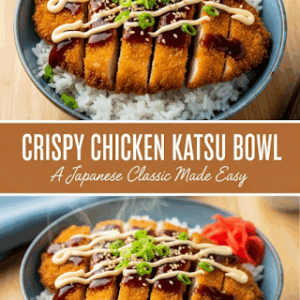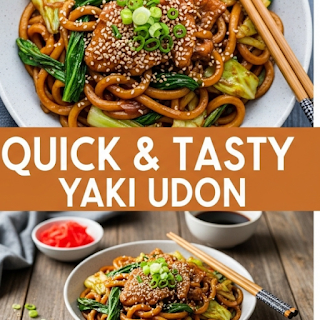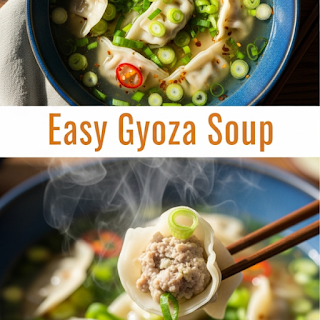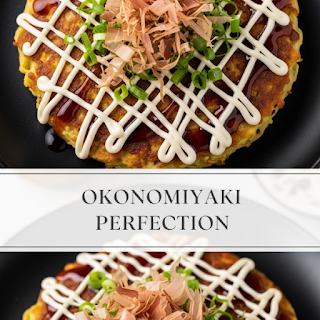Japanese Katsu Bowls are one of the most comforting and satisfying meals you can prepare at home. At their core, these bowls feature crispy breaded cutlets—usually chicken or pork—served on a bed of warm, fluffy rice, and topped with a generous drizzle of savory-sweet tonkatsu sauce. With their perfect balance of crunch, tenderness, and bold flavors, katsu bowls embody the essence of Japanese comfort food. This dish has grown in popularity worldwide not only because of its irresistible taste but also because of its simple preparation, making it accessible for home cooks of all skill levels.

The word “katsu” is short for “katsuretsu,” which means cutlet in Japanese. Originally inspired by Western-style breaded meats, katsu has evolved into a beloved staple of Japanese cuisine, often enjoyed at family dinners, local eateries, and bento boxes. When paired with rice in a bowl format, the dish becomes a complete and filling meal, offering both convenience and satisfaction.
What sets Japanese katsu bowls apart is the tonkatsu sauce—a thick, tangy, and slightly sweet condiment that brings all the elements together. Combined with optional toppings such as shredded cabbage, green onions, or sesame seeds, every bite delivers a delightful mix of flavors and textures. Whether you are new to Japanese cooking or a longtime fan, preparing this dish at home is an excellent way to enjoy an authentic restaurant-style experience in your own kitchen.
Benefits of Japanese Katsu Bowls
Japanese Katsu Bowls with Tonkatsu Sauce offer more than just a delicious meal—they also bring a variety of benefits that make them a great choice for weeknight dinners, family gatherings, or meal prep. One of the primary advantages is their balance of flavors and textures. The combination of crispy breaded cutlet, soft rice, and rich sauce creates a satisfying harmony that pleases both kids and adults alike. It is a dish that feels indulgent yet comforting, making it an excellent option for when you want to enjoy a home-cooked treat without much effort.
Another benefit lies in the adaptability of the recipe. While chicken and pork are the most common proteins used, katsu can be prepared with beef, fish, tofu, or even eggplant, making it versatile enough to suit different dietary preferences. This flexibility ensures that everyone at the table can enjoy their own variation without compromising on flavor.
Japanese Katsu Bowls are also relatively simple to prepare. With basic pantry ingredients—flour, eggs, breadcrumbs, and rice—you can create a meal that looks and tastes like something from a restaurant. The frying technique is straightforward, and once the cutlets are cooked, assembly is as easy as placing everything in a bowl and topping with sauce. This makes it a practical option for busy weeknights when you want something quick yet satisfying.
From a nutritional perspective, katsu bowls can be adjusted to achieve a healthier balance. By baking instead of frying, choosing lean cuts of meat, or pairing the dish with a side of vegetables or miso soup, you can enjoy all the flavor with fewer calories and added nutrients. Even the rice base can be swapped for brown rice or quinoa for extra fiber and a wholesome twist.
Finally, katsu bowls are deeply comforting and family-friendly. The crispy cutlet appeals to picky eaters, while the rich tonkatsu sauce elevates the meal into something truly special. Served in a single bowl, it minimizes cleanup and offers a convenient way to enjoy a hearty, balanced dinner. For anyone looking to bring Japanese flavors into their weekly meal rotation, katsu bowls are an excellent choice.
Nutritional Information
Japanese Katsu Bowls with Tonkatsu Sauce deliver a delicious balance of protein, carbohydrates, and fats. While the crispy fried cutlet gives the dish its signature crunch and savory flavor, the rice base provides a comforting source of energy, and the sauce ties everything together with a bold, tangy sweetness. Understanding the nutritional profile can help you enjoy this dish while making mindful adjustments according to your dietary needs.
A typical chicken katsu bowl contains around 600–800 calories per serving, depending on portion size and cooking method. The breaded cutlet is the primary source of calories, as frying adds extra fat, but it also contributes high-quality protein necessary for muscle repair and overall health. By opting for lean cuts of chicken breast or pork loin, you can reduce excess fat while keeping the protein content high.
Rice, often served in generous portions, supplies the carbohydrates needed for energy. Using white rice keeps the texture fluffy and light, while switching to brown rice or even quinoa adds more fiber, vitamins, and minerals, making the bowl more filling and nutritious. Pairing the katsu with shredded cabbage or steamed vegetables on the side increases the fiber intake and balances the richness of the fried cutlet.
Tonkatsu sauce, while flavorful, does contain sugar and sodium. Moderating the amount used—or preparing a homemade version with reduced sugar—can make the dish lighter without compromising on taste. Japanese mayonnaise is often added as a garnish, providing creaminess but also increasing fat content. For those watching calories, a light drizzle is sufficient to enjoy the flavor without overindulgence. Overall, Japanese katsu bowls can be enjoyed as part of a balanced diet, especially when paired with vegetables and portion-controlled rice.
Creative Variations
One of the reasons Japanese Katsu Bowls are so popular is their versatility. While the classic version features chicken or pork cutlets served over rice, countless variations exist to suit different tastes, dietary needs, and occasions. By experimenting with different proteins, cooking methods, and toppings, you can enjoy a new twist on this beloved dish every time you prepare it.
The most common variation is the **Chicken Katsu Bowl**, made with boneless chicken breasts coated in panko breadcrumbs and fried until golden. Similarly, **Pork Katsu (Tonkatsu)** uses pork loin or cutlets and is equally popular in Japan. For beef lovers, thinly sliced steak coated in breadcrumbs creates a hearty alternative, while seafood enthusiasts can try shrimp katsu or fish fillets for a lighter option.
Vegetarian and vegan adaptations are also possible. Tofu katsu, made by pressing firm tofu and coating it with panko before frying or baking, delivers a crispy yet plant-based alternative. Eggplant slices or portobello mushrooms can also be used in place of meat, absorbing flavors beautifully while providing a satisfying texture.
Another fun twist is **Katsu Curry Bowls**, where the cutlet is served over rice and topped with a rich Japanese curry sauce instead of tonkatsu sauce. This variation is hearty, warming, and especially popular during colder months. You can also transform the bowl into a healthier version by baking the cutlets instead of frying, or by using an air fryer to achieve the same crispy finish with less oil. Adding sides such as pickled vegetables, miso soup, or a fresh salad can further elevate the meal into a well-rounded dining experience. Ultimately, Japanese katsu bowls are endlessly customizable—perfect for adapting to whatever ingredients you have on hand or whatever mood you are in.
Ingredients Table
Quantities below make 4 bowls. Adjust to taste and availability.
| Component | Ingredient | Quantity | Notes / Substitutions |
|---|---|---|---|
| Rice Base | Short-grain white rice | 2 cups (uncooked) | Rinse until water runs clear; use brown rice or quinoa if preferred |
| Water | 2¼–2½ cups | Cook per rice cooker or stovetop instructions | |
| Shredded cabbage (optional) | 2 cups | Classic side with katsu; lightly salted | |
| Katsu Cutlets | Chicken breasts (or pork loin cutlets) | 4 pieces (120–150 g each) | Pound to 1 cm thickness |
| Salt & black pepper | To taste | Season both sides | |
| All-purpose flour | ½ cup | ||
| Eggs | 2 large, beaten | ||
| Panko breadcrumbs | 1½ cups | Japanese panko for extra crunch | |
| Neutral oil (for frying) | 600–750 ml (2½–3 cups) | Or use air fryer/baking (see steps) | |
| Lemon wedges | 4 | Optional for serving | |
| Sesame seeds / scallions | 2 tbsp / 2 stalks | Optional garnish | |
| Tonkatsu Sauce (Quick) | Worcestershire sauce | 3 tbsp | |
| Ketchup | 3 tbsp | ||
| Oyster sauce (or soy sauce) | 1½ tbsp | Use soy for vegetarian | |
| Brown sugar or honey | 1–2 tsp | Adjust sweetness to taste | |
| Rice vinegar | 1 tsp | Balances the sauce | |
| Optional Drizzle | Japanese mayonnaise | 2–3 tbsp | Thin with a little water for zigzag |
| Shichimi togarashi | Pinch | For gentle heat |
Step-by-Step Instructions
- Cook the rice: Rinse rice until the water runs clear. Cook in a rice cooker (preferred) or on the stovetop (2¼–2½ cups water for 2 cups rice). Keep warm.
- Prep the cutlets: Butterfly thick chicken breasts if needed and pound to about 1 cm thickness. Pat dry and season both sides with salt and pepper.
- Set up dredging station: Place flour in one shallow dish, beaten eggs in a second, and panko in a third.
- Bread the cutlets: Coat each piece in flour (shake off excess), dip in egg, then press firmly into panko to fully cover. Rest 5 minutes so crumbs adhere.
- Fry: Heat 3–4 cm oil in a deep skillet to 170–175°C (340–350°F). Fry cutlets 3–4 minutes per side until golden and internal temp reaches 74°C/165°F (chicken) or 63°C/145°F (pork). Drain on a rack. Air fryer: brush lightly with oil and cook at 200°C/390°F for 10–12 min, flipping once. Baked: place on a wire rack over a tray, spray with oil, bake at 220°C/425°F for 15–18 min.
- Make the sauce: Whisk Worcestershire, ketchup, oyster (or soy) sauce, sugar/honey, and rice vinegar until glossy. Adjust sweetness and tang.
- Slice the katsu: Let rest 2–3 minutes, then slice into strips with a sharp knife to keep the crust intact.
- Assemble the bowls: Divide warm rice among 4 bowls. Add a handful of shredded cabbage (optional). Top with sliced katsu.
- Finish: Drizzle generously with tonkatsu sauce. Add a thin zigzag of Japanese mayo if using. Garnish with sesame seeds and sliced scallions; serve with lemon wedges.
- Serve immediately: Enjoy while the coating is crisp and the rice is hot. Offer extra sauce at the table.
Pro Tip: For meal prep, fry/bake the cutlets and keep the sauce separate. Re-crisp cutlets in an air fryer for 3–4 minutes before serving.
Serving Suggestions
Japanese Katsu Bowls are most enjoyable when served hot, right after the cutlets are fried or baked to golden perfection. The crispy coating contrasts beautifully with the fluffy steamed rice and the rich drizzle of tonkatsu sauce. To complete the bowl, add shredded cabbage either underneath or alongside the katsu for freshness and crunch. The cabbage also helps balance the richness of the fried cutlet, offering a light and refreshing contrast.
For a more traditional Japanese-style meal, pair the katsu bowl with miso soup, pickled vegetables such as tsukemono, or a simple cucumber salad. These sides not only complement the flavors but also turn the dish into a well-rounded and nourishing dining experience. Adding a sprinkle of sesame seeds, thinly sliced scallions, or even a dash of shichimi togarashi (Japanese chili pepper mix) enhances both presentation and flavor.
If you’re hosting, consider preparing a variety of proteins for your guests: chicken katsu, pork katsu, and tofu katsu. Serve each over rice in individual bowls with separate garnishes and sauces, allowing everyone to enjoy their own version. The dish can also be adapted into smaller portions for bento boxes, making it an excellent option for lunch prep.
Conclusion
Japanese Katsu Bowls with Tonkatsu Sauce are the perfect marriage of crispy, savory cutlets and soft, comforting rice. With their irresistible combination of textures and flavors, they bring the comfort of Japanese home cooking straight into your kitchen. This recipe is versatile, easy to adapt, and suitable for any occasion—whether you are preparing a quick weeknight dinner, a hearty family meal, or a special dish for guests.
The beauty of katsu bowls lies in their flexibility. You can switch proteins, adjust garnishes, or experiment with healthier cooking methods without losing the essence of the dish. At its heart, a katsu bowl is about warmth, satisfaction, and the joy of eating a meal that feels indulgent yet balanced. Once you try making it at home, it will quickly become a staple in your rotation of comfort foods.
Whether you’re new to Japanese cuisine or already a fan, this recipe offers a delicious way to enjoy authentic flavors in a simple, approachable format. Crispy, savory, and full of flavor—Japanese katsu bowls are a dish you’ll return to again and again.


